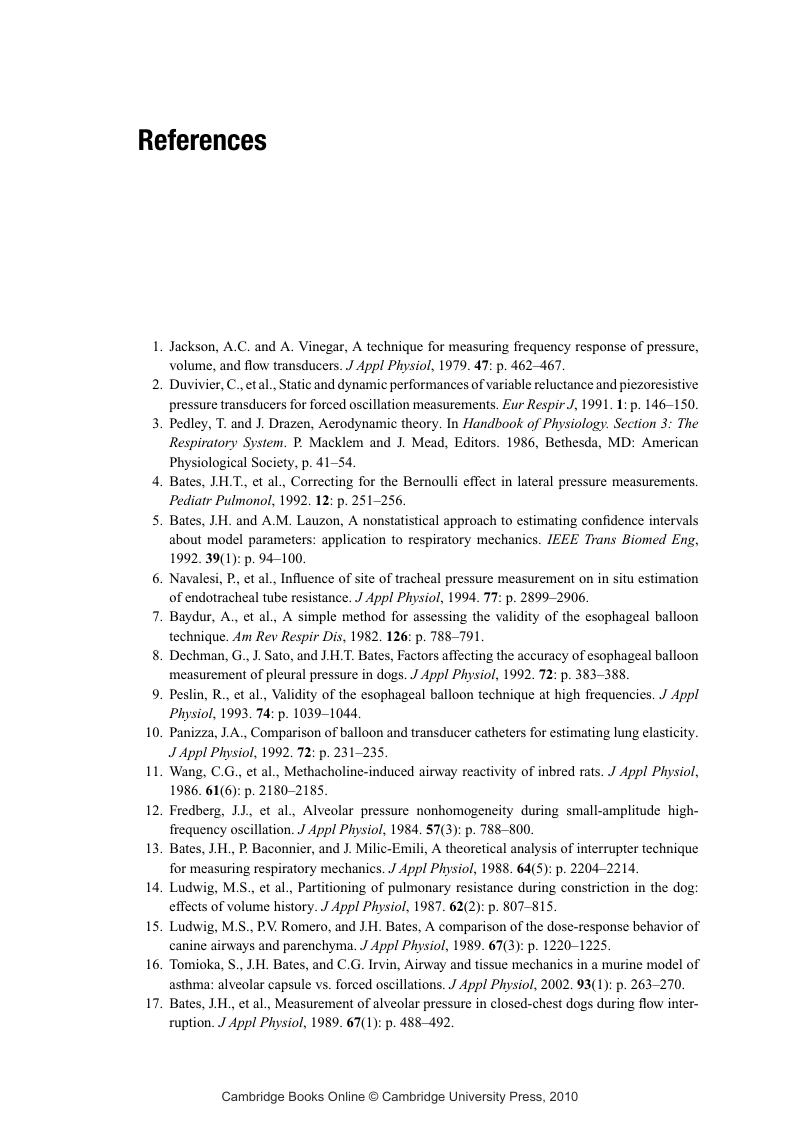Book contents
- Frontmatter
- Contents
- Preface
- Notation
- 1 Introduction
- 2 Collecting data
- 3 The linear single-compartment model
- 4 Resistance and elastance
- 5 Nonlinear single-compartment models
- 6 Flow limitation
- 7 Linear two-compartment models
- 8 The general linear model
- 9 Inverse models of lung impedance
- 10 Constant phase model of impedance
- 11 Nonlinear dynamic models
- 12 Epilogue
- References
- Index
- References
References
Published online by Cambridge University Press: 05 June 2012
- Frontmatter
- Contents
- Preface
- Notation
- 1 Introduction
- 2 Collecting data
- 3 The linear single-compartment model
- 4 Resistance and elastance
- 5 Nonlinear single-compartment models
- 6 Flow limitation
- 7 Linear two-compartment models
- 8 The general linear model
- 9 Inverse models of lung impedance
- 10 Constant phase model of impedance
- 11 Nonlinear dynamic models
- 12 Epilogue
- References
- Index
- References
Summary

- Type
- Chapter
- Information
- Lung MechanicsAn Inverse Modeling Approach, pp. 207 - 217Publisher: Cambridge University PressPrint publication year: 2009



